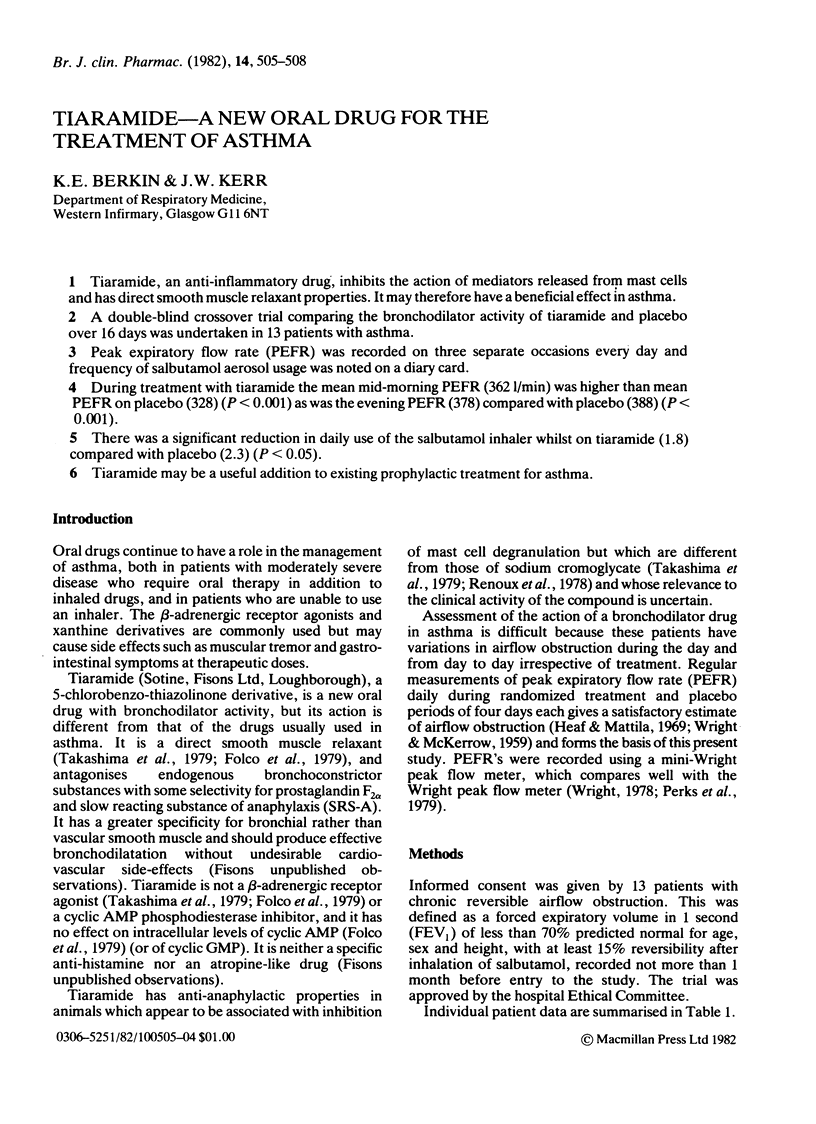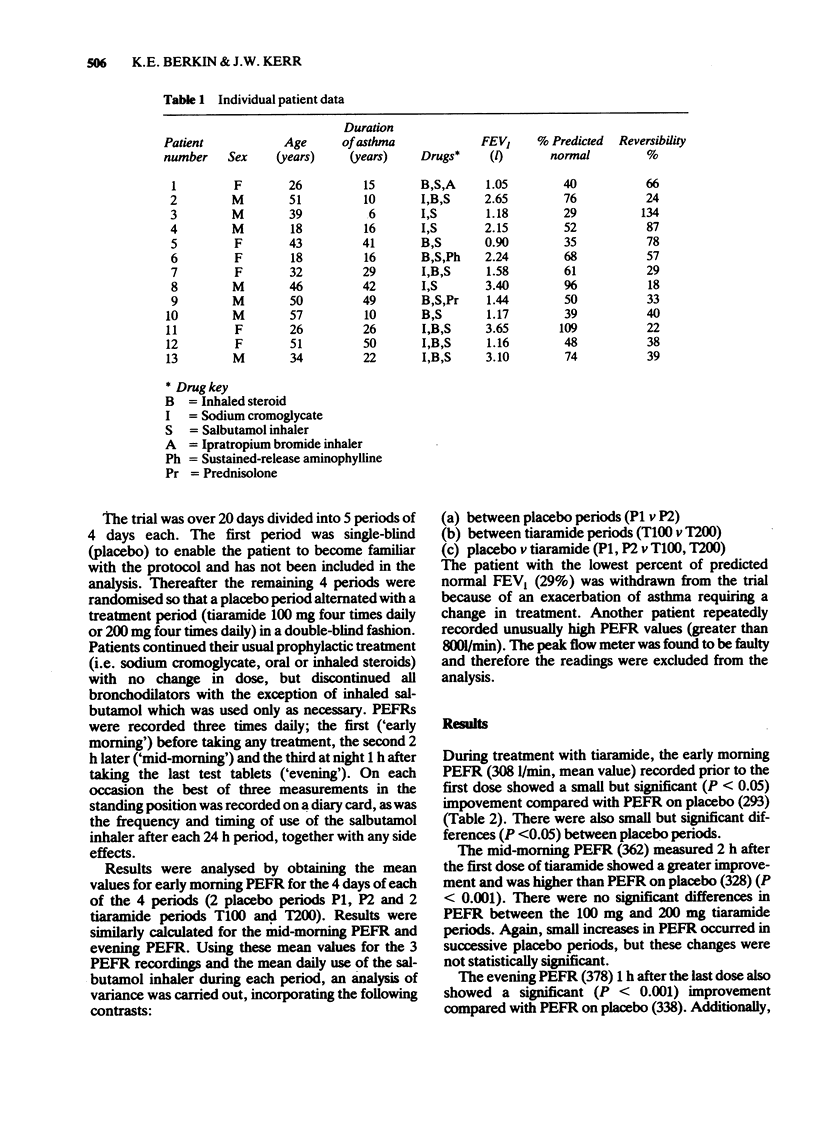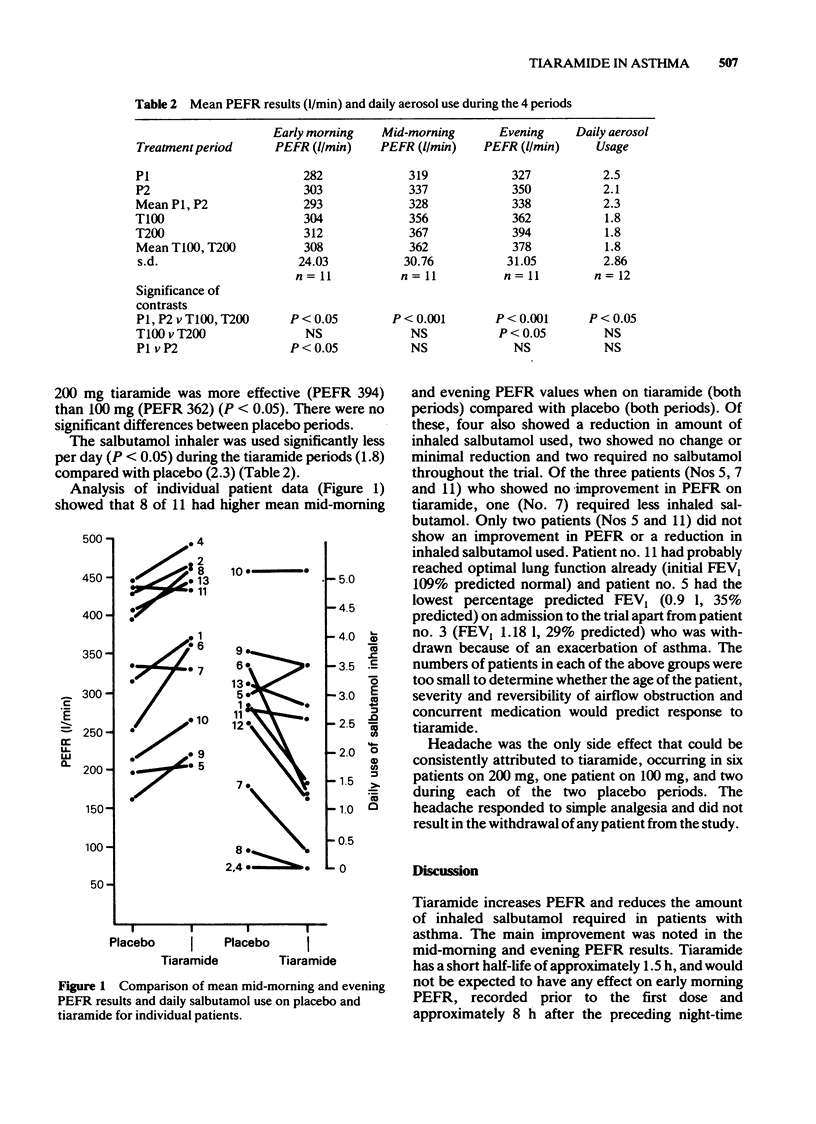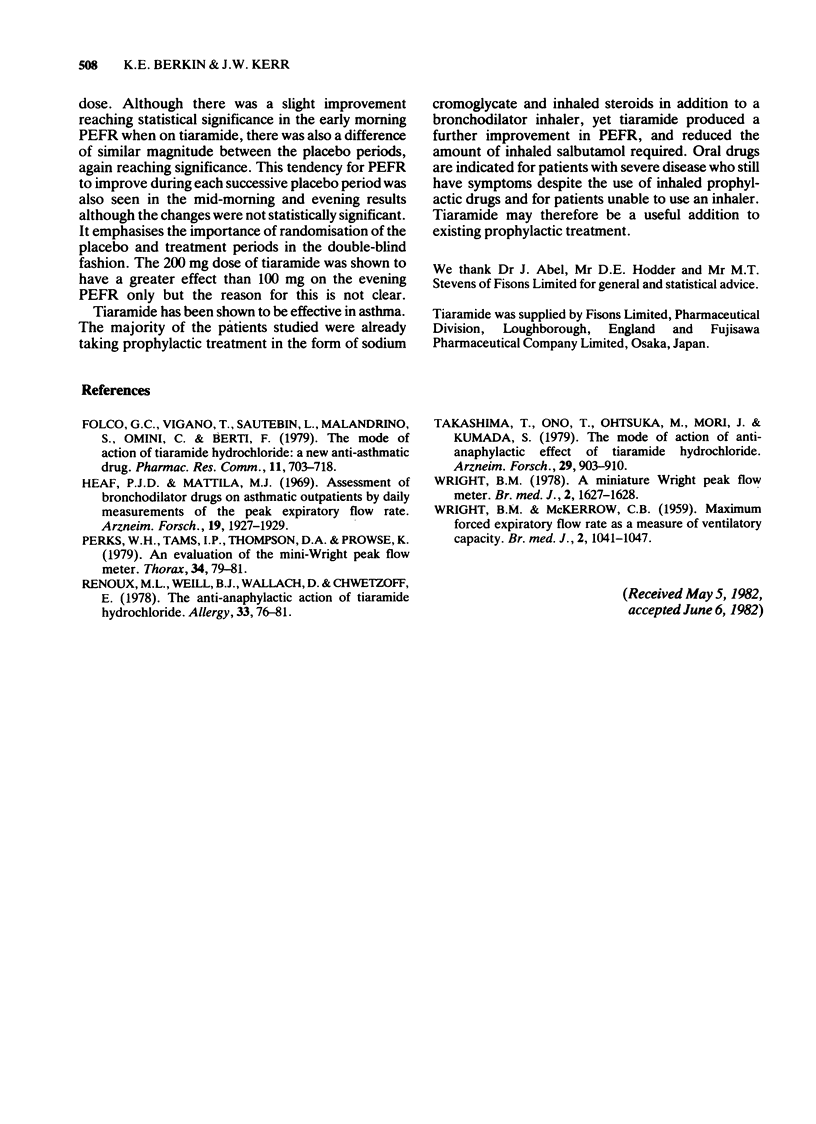Abstract
1 TIaramide, an anti-inflammatory drug, inhibits the action of mediators released from mast cells and has direct smooth muscle relaxant properties. It may therefore have a beneficial effect in asthma. 2 A double-blind crossover trial comparing the bronchodilator activity of tiaramide and placebo over 16 days was undertaken in 13 patients with asthma. 3 Peak expiratory flow rate (PEFR) was recorded on three separate occasions every day and frequency of salbutamol aerosol usage was noted on a diary card. 4 During treatment with tiaramide the mean mid-morning PEFR (362 1/min) was higher than mean PEFR on placebo (328) (P less than 0.001) as was the evening PEFR (378) compared with placebo (388) (P less than 0.001). 5 There was a significant reduction in daily use of the salbutamol inhaler whilst on tiaramide (1.8) compared with placebo (2.3) (P less than 0.05). 6. Tiaramide may be a useful addition to existing prophylactic treatment for asthma.
Full text
PDF



Selected References
These references are in PubMed. This may not be the complete list of references from this article.
- Folco G. C., Viganò T., Sautebin L., Malandrino S., Omini C., Berti F. The mode of action of tiaramide hydrochloride: a new antiasthmatic drug. Pharmacol Res Commun. 1979 Sep;11(8):703–718. doi: 10.1016/s0031-6989(79)80060-0. [DOI] [PubMed] [Google Scholar]
- Heaf P. J., Mattila M. J. Assessment of bronchodilator drugs on asthmatic out-patients by daily measurements of the peak expiratory flow rate. Arzneimittelforschung. 1969 Dec;19(12):1927–1929. [PubMed] [Google Scholar]
- Perks W. H., Tams I. P., Thompson D. A., Prowse K. An evaluation of the mini-Wright peak flow meter. Thorax. 1979 Feb;34(1):79–81. doi: 10.1136/thx.34.1.79. [DOI] [PMC free article] [PubMed] [Google Scholar]
- Renoux M. L., Weill B. J., Wallach D., Chwetzoff E. The anti-anaphylactic action of tiaramide hydrochloride. Allergy. 1978 Apr;33(2):76–81. doi: 10.1111/j.1398-9995.1978.tb01512.x. [DOI] [PubMed] [Google Scholar]
- Takashima T., Ono T., Ohtsuka M., Mori J., Kumada S. The mode of action of antianaphylactic effect of tiaramide hydrochloride. Arzneimittelforschung. 1979;29(6):903–910. [PubMed] [Google Scholar]
- WRIGHT B. M., McKERROW C. B. Maximum forced expiratory flow rate as a measure of ventilatory capacity: with a description of a new portable instrument for measuring it. Br Med J. 1959 Nov 21;2(5159):1041–1046. doi: 10.1136/bmj.2.5159.1041. [DOI] [PMC free article] [PubMed] [Google Scholar]
- Wright B. M. A miniature Wright peak-flow meter. Br Med J. 1978 Dec 9;2(6152):1627–1628. doi: 10.1136/bmj.2.6152.1627. [DOI] [PMC free article] [PubMed] [Google Scholar]


